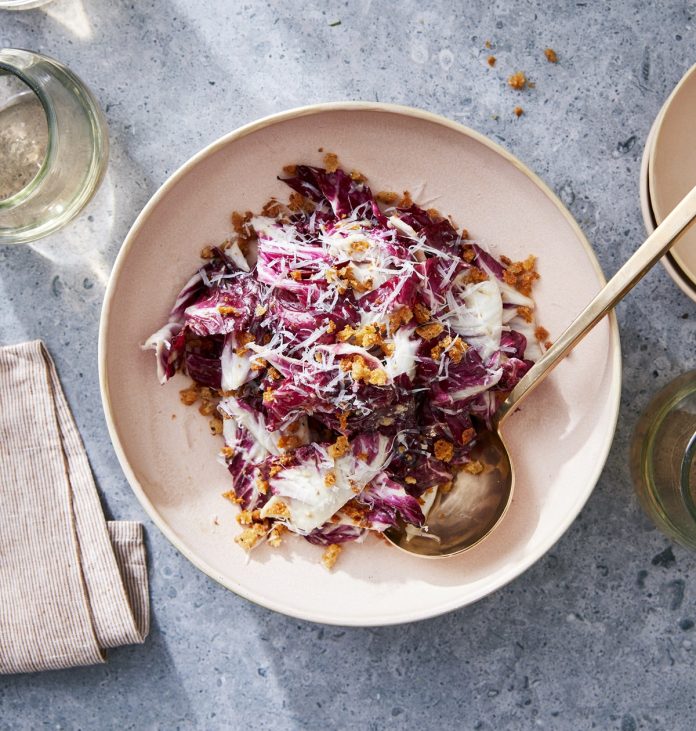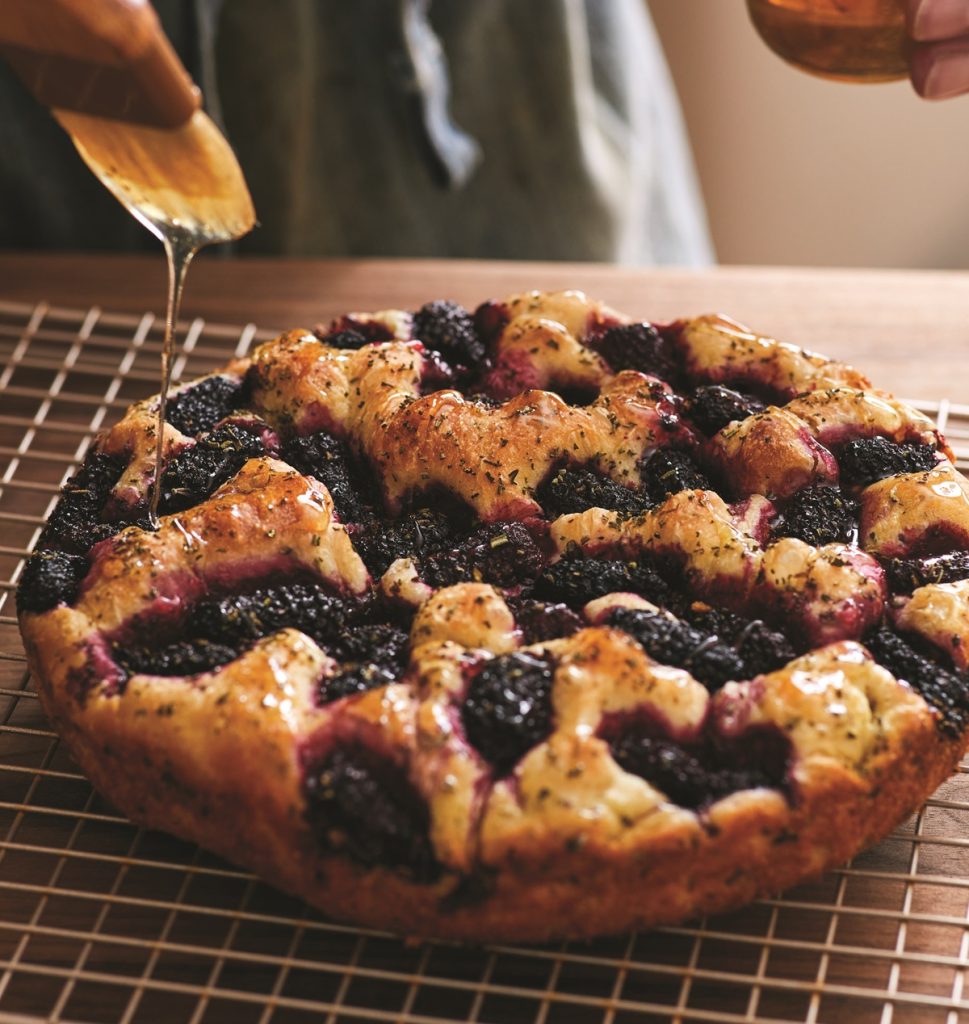
There is nothing like a home-cooked meal. The only thing that makes a home-cooked meal better is using fresh and local ingredients. Luckily for us, Skagit Valley is home to many farms offering a plethora of fresh ingredients for all kinds of recipes. Not sure what to cook or bake with all that fresh, local produce? The new “Genuine Skagit Cooking” cookbook can you help you there.

Featuring over 45 recipes from food producers, small business owners, and residents from around Skagit Valley, “Genuine Skagit Cooking” is a collaboration between Genuine Skagit Valley, an organization that supports Skagit Valley growers and producers to help sustain farming in the region for generations to come, and Raspberry Bow Press, an independent book press located in Skagit.
“Once I discovered that a publisher/printer had set up shop in the Skagit Valley, and was local to our community and region, I reached out,” shares Blake Van Roekel, director of Genuine Skagit Valley. “Raspberry Bow Press is a husband-and-wife publishing team and have extensive experience editing and publishing cookbooks. When I discovered that we could work locally on this project, I jumped!”
Skagit County Residents Share Their Favorite Recipes in New Cookbook
Then it was time to get to work! It took three years for Blake and her team to gather and test recipes, and get the book together. “Everyone in our community was invited to contribute,” shares Blake. And they did! The over 45 recipes featured in the book came from a wide variety of Skagit County residents, including residents, farmers, food producers and professional chefs.

And what makes this different from any other cookbook? Each recipe was chosen because it was not only delicious but used ingredients you find growing right here in Skagit County. “When we reached out to invite recipe submissions, we outlined that we would like to include what Skagit farms or food producers the ingredients came from,” explains Blake. “With over 80 commercial crops grown in the Skagit Valley, I was so impressed with how many of our home cooks and professionals sought them out and purchased directly from our growers regularly.”
A Taste of ‘Genuine Skagit Cooking’
When asked what her favorite recipe in the cookbook was, Blake couldn’t choose just one. “That is like asking if I have a favorite child!” she smiles. “Each has its own flavor with its own season and personality.”
But to give you a taste, we have reprinted one of the many scrumptious recipes from the “Genuine Skagit Cooking” cookbook below. Purchase your copy of “Genuine Skagit Cooking” on the Book Shucker website.

Marionberry, Rosemary, and Honey Focaccia
Reprinted with permission from “Genuine Skagit Cooking,” Raspberry Bow Press
From Laurie Pfalzer, chef, teacher and author of Simple Fruit
Savory focaccia gets a sweet setup. I’ve been making fruit focaccia for many years for both savory and sweet palates. Use any type of blackberry or blackberry hybrid here, but the intense tart-sweet marionberry sets nicely against the savory rosemary. You can also try a classic blackberry such as the Obsidian grown at Hayton Farms on Fir Island, which is much sweeter than a marionberry. Or the fleeting floral tayberry or loganberry (hybrids of raspberries and blackberries) would do nicely here. After berry season ends, I replace the berries with stone fruit, such as peaches, nectarines, and plums. The options are endless! This focaccia is even better when you use locally grown and milled flour from Cairnspring Mills. Note that the dough has a two-step process, so be sure to plan ahead for the ten- to fourteen-hour waiting period while your starter develops.
Makes one 9-inch focaccia (or 3 to 4 servings)
For the poolish (starter):
- 1/4 cup cool water (about 70 degrees F)
- Pinch of active dry yeast
- 1/3 cup Cairnspring Mills Organic Edison T85 All-Purpose Flour or bread flour
Dough:
- 1 1/2 teaspoons active dry yeast or ¾ teaspoon instant yeast
- ¾ cup lukewarm water (about 85 degrees F)
- 5 tablespoons extra-virgin olive oil
- 4 tablespoons honey
- 1 3/4 cups Cairnspring Mills Organic Edison T85 All-Purpose Flour or bread flour, plus more for dusting
- 3 tablespoons roughly chopped fresh rosemary
- ½ teaspoon kosher salt
- 1 cup marionberries
To make the poolish, in a small bowl, combine the water and yeast. Add the flour and stir until combined. The poolish will be very wet. Cover and let sit at room temperature for 10 to 14 hours, until you are ready to mix the final dough.
To mix the final dough, in a large bowl, sprinkle the yeast over the water. Add the poolish, breaking it up with your hands into small pieces for easy mixing. Add 2 tablespoons of the olive oil, 1 tablespoon of the honey, the flour, 2 tablespoons of the rosemary, and the salt and mix with a wooden spoon or bowl scraper until the dough starts to come together but is still ragged. Continue mixing the dough by grasping it on the outside and pulling or stretching it into the middle as you turn the bowl. Continue until the dough becomes elastic and smoother. The dough will still look somewhat rough, but it will have some muscle to it. Flip the dough over in the bowl and cover it. Rest the dough at room temperature (about 70 degrees F) for about 30 minutes.
Gently fold the dough by stretching each side and folding it into the middle. Flip the dough over in the bowl and cover it. Let the dough rest for another 30 minutes.
Meanwhile, preheat the oven to 400 degrees F. In an 8-inch round baking pan, add the remaining 3 tablespoons olive oil and set aside. (It’s OK to use a larger pan, but your focaccia will be thinner.)
Lightly dust a work surface with flour and then gently pat out the dough with your hands to 8 inches in diameter. (Note that there is a top and bottom to your dough. The top is the side that is facing up while it rests. This should continue to be the top.) Place the dough top down in the prepared pan to cover the top with oil. Turn the dough over so that the oiled top is facing up (both sides will have oil on them). Press the marionberries into the dough and let it sit uncovered in a warm place for 30 minutes. (I use the stove top of my oven for some extra warmth.)
Just before baking, use your fingertips to “stipple” the dough, so that the dough is indented across the top. Sprinkle the remaining 1 tablespoon rosemary over the top. Bake the focaccia until golden brown, about 30 minutes.
After removing the focaccia from the oven, slip it from the pan onto a rack to cool for 10 minutes. In a small pot over medium heat, warm the remaining 3 tablespoons honey. Brush the honey gently over the top of the focaccia. Cool the focaccia completely before serving.
Focaccia is best served the same day. Store any leftover focaccia in an airtight container; it can be refreshed the following day in a 400-degree-F oven for 5 minutes.



































